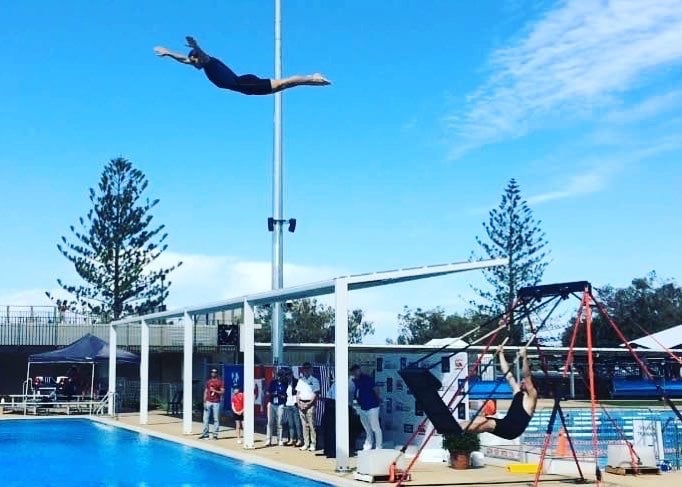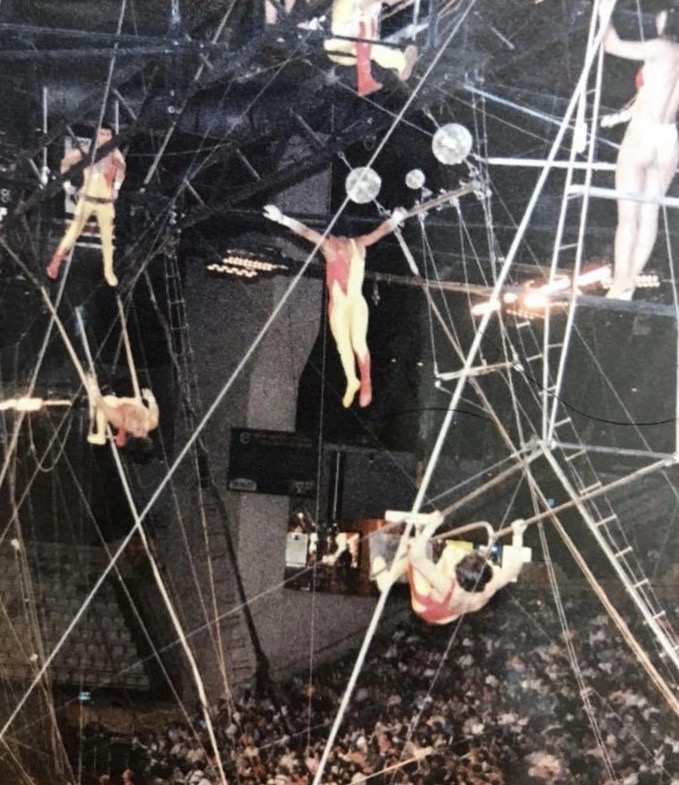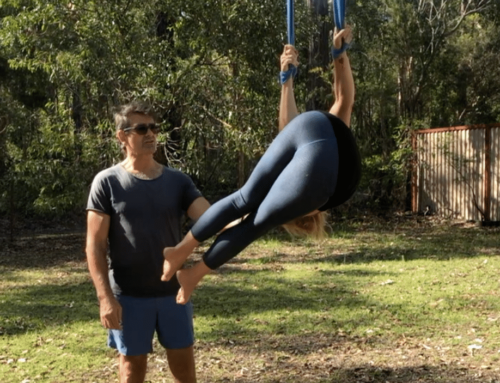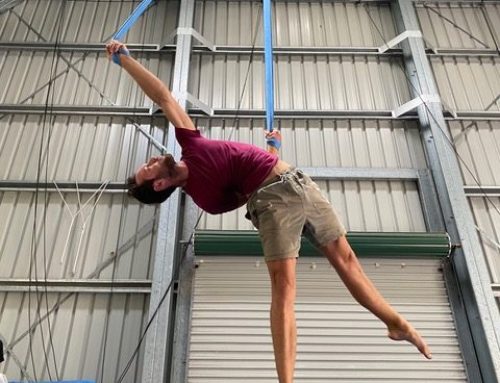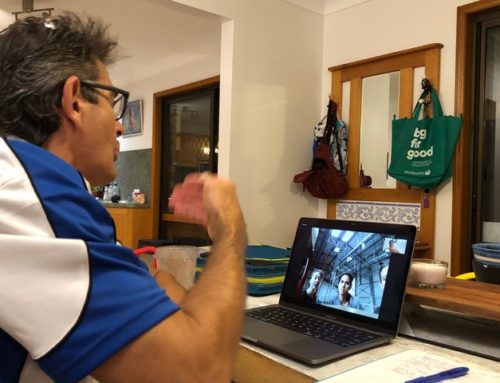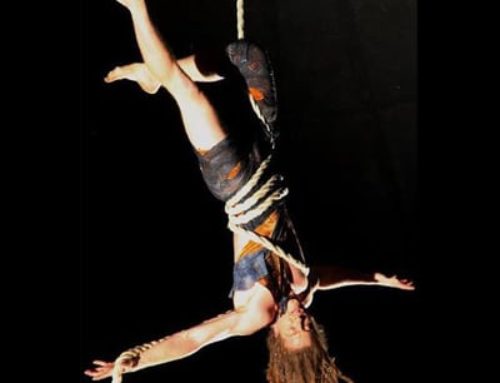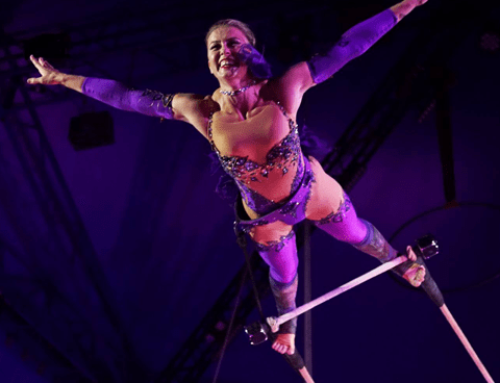Russian swings
The next swinging discipline I would like to highlight is the use of the Russian swing in circus. We already know that there are four factors that influence the swing height of a pendulum. Length of the pendulum, the weight at the bottom of the pendulum, the tension of the cables/ropes or pipes supporting the weight and finally air friction. We also know that the only way to gain height on a pendulum is by shortening the pendulum and increasing the speed of the swing. Russian swing is a great example of a swing using a fixed length pendulum (compared to cables or ropes used on trapeze bars), since they are made from solid pipes to support the platform on which the students will stand. The fixed length of the pendulum reduces the amount of energy lost into the movement of the ropes or cables, but therefore is harder to start the swing from a static position. For this reason, a Russian swing’s dimensions are not as long as those used on a swinging trapeze (shorter by about one meter), but the benefits of this is the ability to add a great kinetic energy to the swing which serves to propel the flyers to great heights and to distances.
Traditionally, Russian swings were a ground-based discipline using a long enough platform to fit multiple students at the same time. As you can imagine, the combined weight of all of those people, plus the existing weight of the platform (steel), can generate a large amount of momentum. The pendulum is also not limited to only swinging to a full height of 180 degrees, and in fact, some Russian swings are used to do a full 360-degree rotation around the point of connection to the frame. This also gives the students many more choices of choosing height verses distance. By leaving the swing before the 180-degree point, they will get more distance than height, but by leaving the platform at any angle more than 180-degrees, they will get them more height than distance. Due to the efficient propulsion created by the Russian swing, it has also found its way into aerial acts, making the effect of flying more breath taking and spectacular than ever. The versatility of the Russian swing has been harnessed by the movie industry, and is widely used in the special effects and stunt areas.
In order to gain height on a Russian swing, students can only employ change of weight and speed to build height. There is usually a minimum of two people required on a Russian swing, the “pusher” and the flyer. It requires much less effort to gain height in comparison to flyers on a flying trapeze, since the flyers and pushers work in tandem to shift their body weights up and down during the swings in order to transfer their weight appropriately to speed up the swing. Using their large thigh muscles on a Russian swing is far easier than using the comparatively small arms muscles on a flying trapeze student in order to shorten or lengthen the pendulum. What those two disciplines have in common is that their weights need to be as far away from the bearing points at the suspension point of the swing, and then as close to the bearing points at the top of the swing in the front and back of the swing. On a ground-based Russian swing, the pusher will start the swing by pushing the platform forwards and upwards using his traction to the ground. He will jump onto the platform when it swings in the backwards direction. The flyer will quickly jump onto the platform just as it passed the lowest point of its swing where it is easiest to reach. Unfortunately, this is also when the swing is moving at its fastest speed. The pusher will throw his weight forwards to try slow down the speed of the swing, giving the flyer a better chance of alighting the swing safely. The little bit of height that is lost during this process is quickly made up once the two partners start to work together to build the height of the swing.
On an aerial Russian swing, the platform is usually much smaller (for two or a maximum of three people), and the Russian swing will sit in a cradle designed to keep it at about a 45-degree angle, so that when both the pusher and the flyer get onto the swing, they already have some swing to start from. It is relatively easy to build up to full height in just two swings if both students work well together at the right time. On the flying trapeze, flyers are usually catapulted towards a swinging catcher and will be caught and returned to the trapeze bar as usual. Ground based Russian swings are used to catapult their flyers into a long net or specially made polyester sheet, set at a 45-degree angle. They are also used to catapult the flyers into swimming pools, or to columns of catchers who will catch the flyers standing on their shoulders. More recent developments in this discipline is for flyers to land back on the Russian swing after completing aerial acrobatics after leaving the platform. There seems to be no limit to the skills and ways that this versatile piece of circus equipment can be used.
The love affair between a circus audience and the pendulum of any swing continues to fascinate and entertain, giving the artists a reason to put in the effort to achieve great skills using the pendulum efficiently and artistically. Enjoy your next swings!

